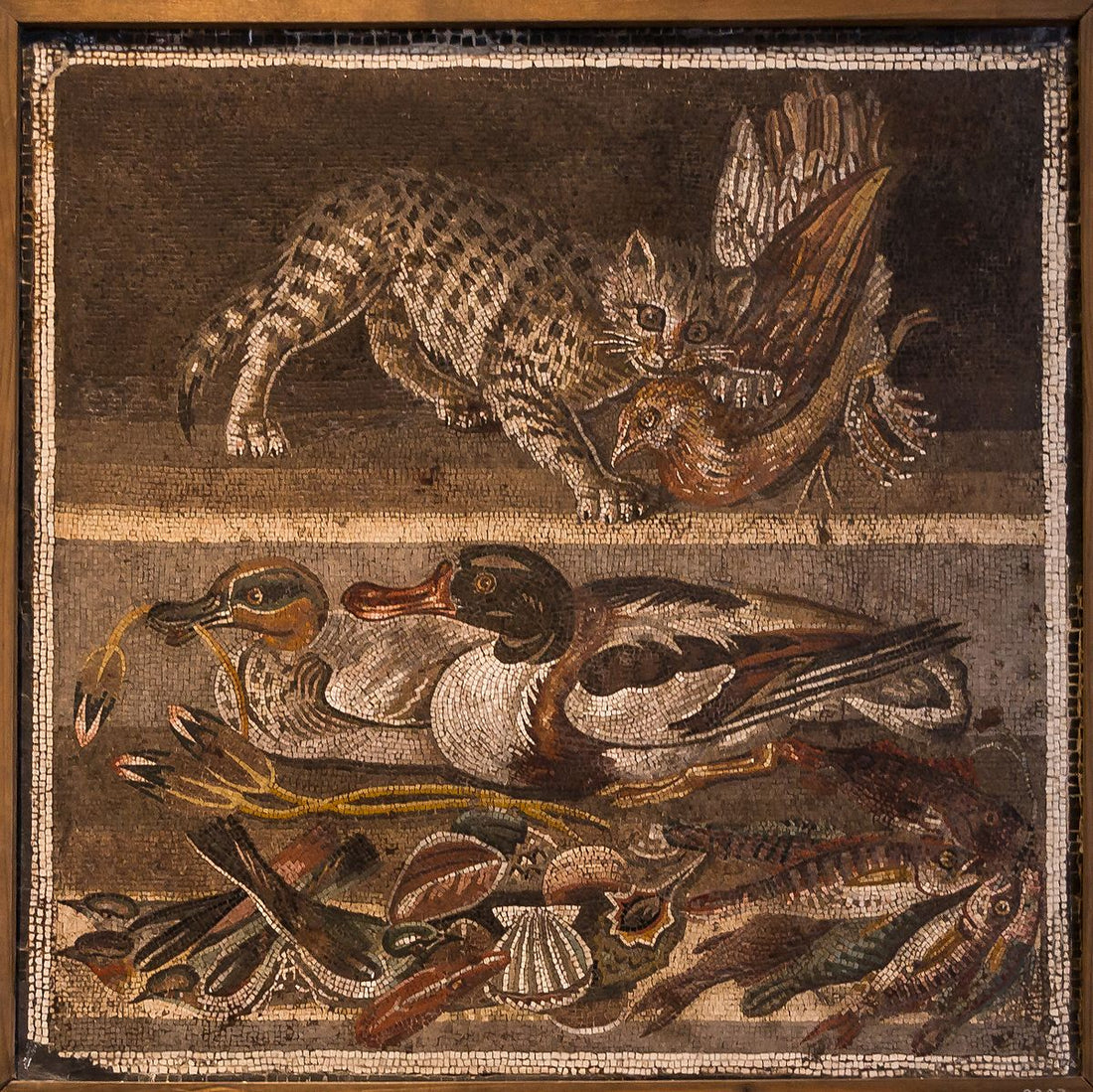How many of us know about the abundance of stray cats that have roamed the streets of Rome since the Roman Empire? Or the fact that these stray cats have been bestowed legal rights in modern-day Italy?
In this article, we’ll go through the history of free-roaming cats in Italy and learn how they have become so well-loved and well-taken care of by the local feral cat population.
(Cat lovers, this one’s especially for you).
Cats in Ancient Times
Cats have been roaming Italy’s streets for a long time, and they go back to the time of the Ancient Romans. The Ancient Romans adored the independent spirits of Roman cats. It was said that the Roman politician Tiberius Gracchus even placed a cat at the base of a sculpture of the Roman Goddess Libertas (Freedom) inside a temple dedicated to her.
- The Roman cat was unique and represented freedom, liberty, and independence, traits that the Romans prized.
- Over time, Roman cats came to be considered sacred and were the only animals allowed to roam freely around the grounds of holy temples.
Cats have been around in Rome for so long that their remains have been dug up at the site of Pompeii. Mosaic art pieces featuring cats have also been found among the ruins of the destroyed city.
Pompeii Cat Mosaic. Via Wikimedia Commons

While the ancient Romans did not venerate cats to the extent that the Egyptians did, they held them in high regard because of the values which these animals espoused and their practical utility in catching unwanted animals like rats.
As the Roman Empire thrived and the human population of its city grew, so did the population of its rats and cats.
- Cats became a great way to reduce the rat population and they were thus greatly valued for their utilitarian purpose as an effective method of pest control.
- The cats were so effective at catching mice that the Roman Army even allegedly brought cats along with them on their travels to prevent their food supplies from being pilfered by rodents.
Cats soon became household pets, and images and depictions of these feline companions also started appearing on their owners’ funeral tombstones and sarcophagi. The tombstone of Laetus’s daughter shows her carrying and cuddling a cat, possibly a depiction of a pet that she had while she was alive.
Illustration of The Tomb of Laetus’s Daughter. Via Flickr

Cats in Modern-Day Italy
Modern-day Italy has one of the best animal protection acts in the world, and this naturally extends to protecting the rights and welfare of its free-roaming cats as well.
Under its National Animal Protection Act issued, stray cats without owners are considered property of the city mayor, thus granting them legal protection.
Harming stray cats is punishable by law, and cats have a right to be fed and cared for in the area which they have chosen as their home. It is also illegal to deliberately remove a stray cat from its home grounds and relocate it elsewhere.
More interestingly, stray cats also have the rights to be registered as a community cat colony under the government administration, thus entitling them to cost-free neutering by local authorities. A stray cat colony may be registered when at least two cats are living in an area that they have chosen as their home. These community cat colonies are also recognized as legal entities in Rome as well.
Sometimes, kind members of the public look after these stray cat colonies, and they are affectionately referred to as Gattara or cat ladies.
A cat lady is someone who looks after many stray cats living in an area, taking care of their basic needs and ensuring that the living area is well-maintained. The term was initially pejorative but slowly took on a more positive connotation after a while, as this gattara took great pride in the responsibility they had in caring for the cats. Young or old, they come from all walks of life and can often be spotted pushing carts of cat snacks, leaving trails of cat kibble on the pavements for the hungry animals.
Torre Argentina Cat Sanctuary
The Torre Argentina Cat Sanctuary is the largest feral cat colony in Rome, containing up to 200 cats which are all under the care of Silvia Viviani, who founded this volunteer-run shelter back in 1994. The non-profit organization provides neutering, cleaning, and feeding services for stray cats. According to Viviani, the Torre Argentina area is a large archaeological district that used to be a popular place for cat abandonment. As the stray cat population there grew, so did the state’s eventual recognition of the colony as a legal entity.

To maintain and develop the cat sanctuary in its early years, Silvia Viviani and several other volunteers started requesting for donations from curious tourists who visited the area. They later earned enough to set up facilities that would allow them to house, treat and feed stray cats.
In the 2010s, several corporate organizations and authorities had proposed ideas for modern developments on the site of this sanctuary, meaning that the old buildings would have to be torn down and the non-profit organization evicted and dispersed. However, counter-efforts were also made to campaign for the preservation of the site and the organization, including a 2012 petition which gathered over 30,000 signatures.
Despite threats of eviction, Viviani has expressed an unwavering optimism that the cat sanctuary will continue to sustain itself and exist for a long time. After all, it has been there for so many years, and the fact that it has also become something of a tourist draw for people who visit Rome would make it difficult for authorities and naysayers to justify the removal and eviction of the cats and volunteers on the old site.
It is now 2022, approximately ten years since the sanctuary received threats of eviction, but Torre Argentina Cat Sanctuary remains standing in its original place. Its name has even made it to tourist destination recommendation websites like TripAdvisor.com, highlighting its immense popularity with travelers who visit Rome.
It seems that the plucky and resilient, well-loved stray cats of Italy have managed to thrive despite the odds, no doubt thanks to the support and care that they receive from the resident population.
For those of you planning to make a trip to Italy soon or in the future, be sure to keep a lookout for the stray cats on the streets. You could even consider going down to Torre Argentina Cat Sanctuary itself to appreciate the volunteers' work and make a small contribution to help ensure the continued protection and care of Italy’s stray cats.




